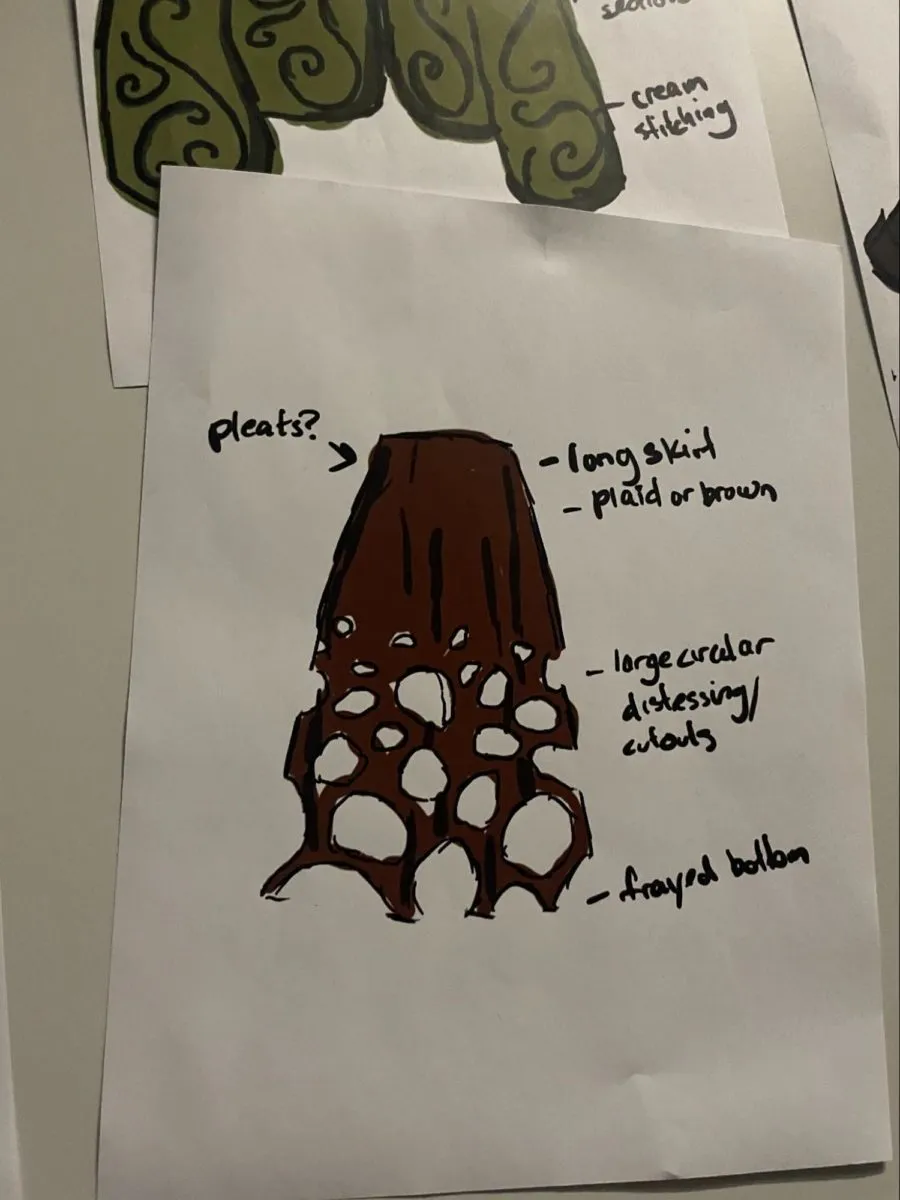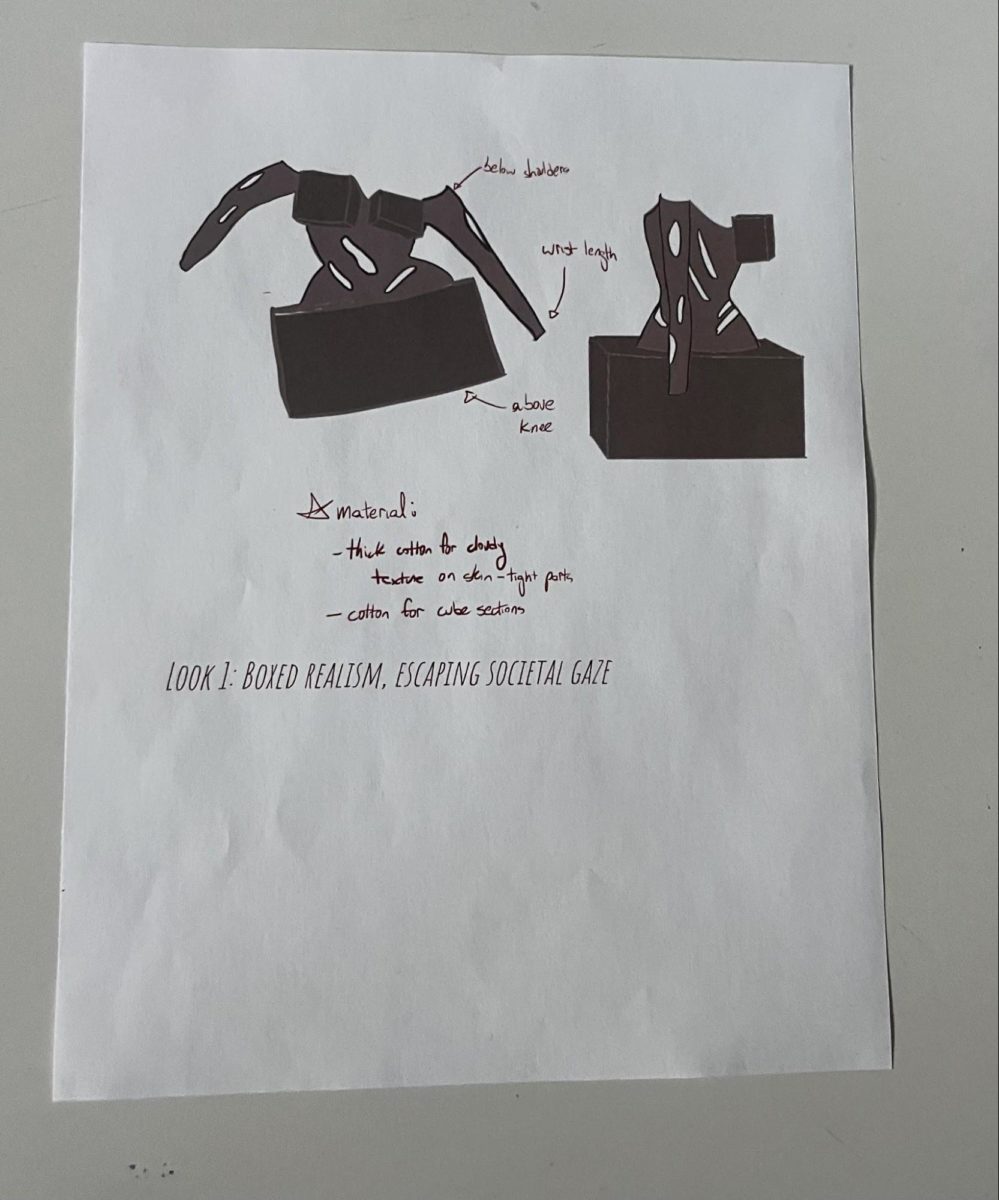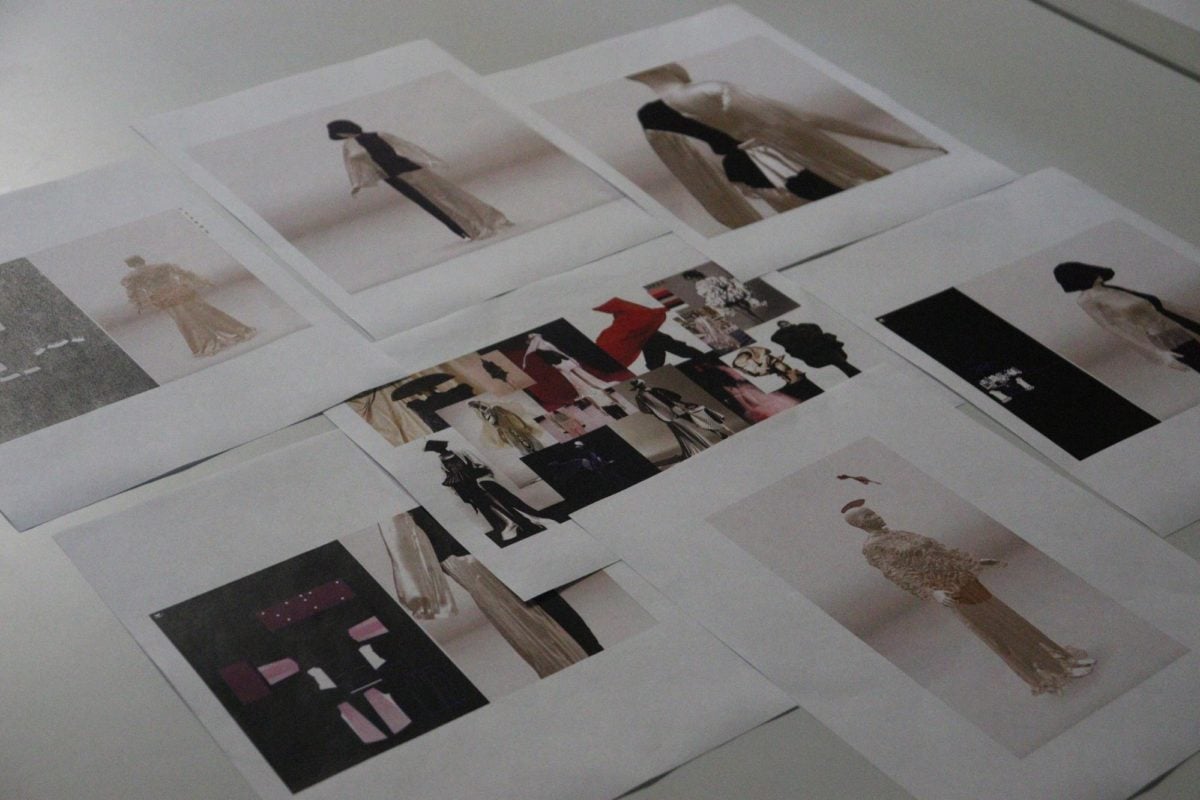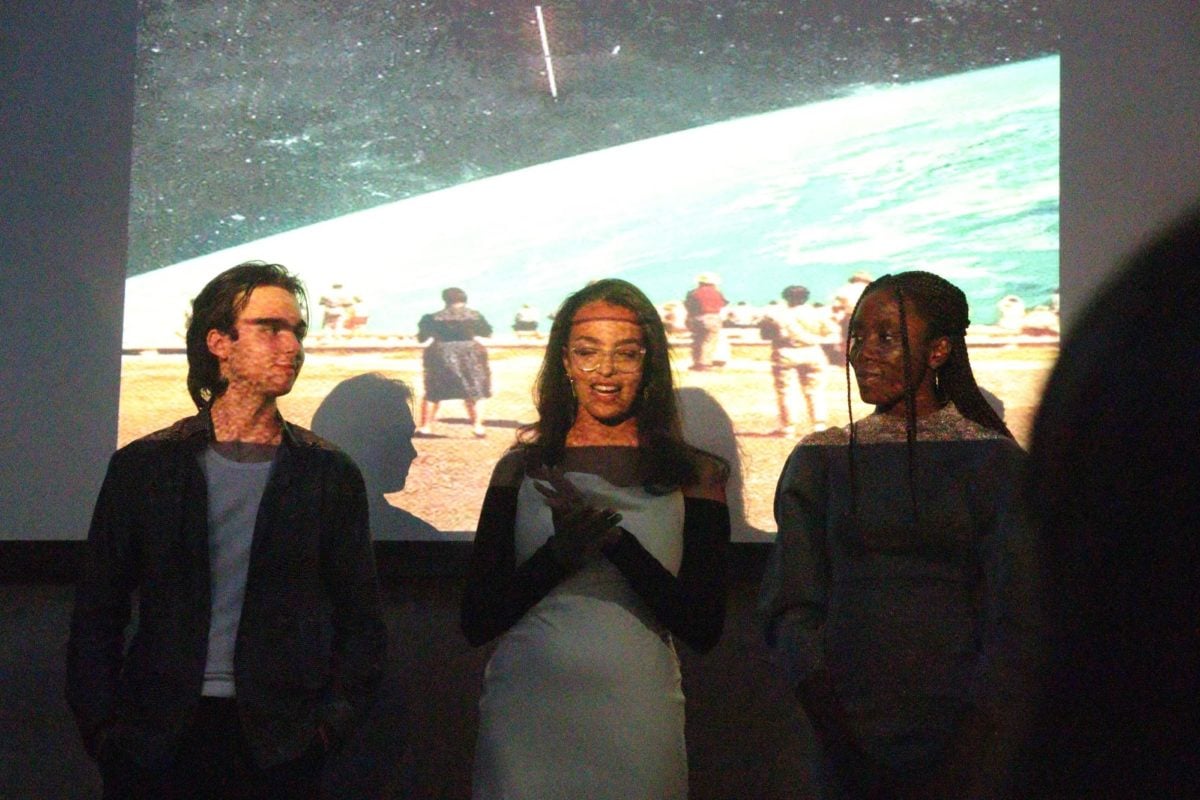FashionX designers redefine retrofuturism on the virtual runway
Distorted tv static handles the projector screen on the wall, and D. School’s dimly lit atrium is illuminated by the screen’s faint glow. Murmurs of anticipation mix with rumblings of artificial rhythms and 1980s jazz. Onlookers overflow from the seats onto the stairs, chatting and laughing. The numerous audience has occur for a singular intent: manner.
College students from all corners of campus convened on Wednesday to witness FashionX’s first style demonstrate of the calendar year, titled, “Back to the Potential: Reconstructing the Fashion Playbook Without Sizing, Gender or Season.” Ten FashionX designers have been functioning towards this second — coming up with, experimenting and organizing — given that the tumble. On the catwalk, the student designers showcased the fruits of their labor, 16 outfits in full, significantly to the enjoyment of the viewers. The FashionX group masterfully distinguished this exciting affair from most style displays: the party was wholly electronic, with a video showcasing the styles as the key function.
Even though regular runways hire bodily levels and human products, the night certainly embodied the beliefs of the “Back to the Long run,” employing a high-tech 3D computer software to travel the night’s festivities. Browzwear, FashionX’s partner for the night time, is the fashion industry’s climbing leader in 3D style software. Browzwear boasts encouraging apparel firms like Columbia, Adidas, Lululemon, Nike and New Balance raise efficiency, velocity up time to sector and boost sustainability. Working with the application, the FashionX cohort formulated individualized legitimate-to-existence layouts on digital models.
The monitor glitched once far more, marking the show’s opening, and rhythmic reverberations beckoned the 16 digital Browzwear versions to the panoramic display on the wall. The night’s phase is entire with a 3D geometric spiral encompassing a glossy silver platform, resembling a hollow futuristic exoskeleton.
The human figures on the screen stood in a row, when a several levitated about 4 toes off the floor. The clothes on their own were an amalgamation of dyads: the past and the potential, light-weight and dim, symmetrical and asymmetrical, uniform and summary. Each and every designer can take inspiration from exceptional sources: some look to Chinese streetwear or well-known culture, others to the restorative character of forests and bridal veil stinkhorn mushrooms.


The very first search, intended by Osadolor Osawemwenze ’24, instantly established a substantial bar for the evening, ambushing me with prosperous earthy hues and layered materials. On the model’s head rested a dreamy, Robin’s Egg and cashmere-coloured headband the embedded sample resembled the blur of human figures passing on the avenue.
Situated on the higher body was a forest-environmentally friendly distressed sweater with mini gaps of material creating nerve-like pathways on the upper body a black stitched vest was overlaid and crisscrossed across the front and back again, enveloping the wearer in a warm hug . Accentuating the waistline was a gold and white belt with an oval buckle, aspect of an homage to Osawemwenze’s Texan roots.
A midi black skirt extended just beneath the knees, and pleats on the higher 50 percent of the garment termed interest to the multidimensional nature of the ensemble. Osawemwenze rounded out the search with a pair of baggy blue denims beneath the skirt.
What adopted had been fifteen more types established by Alison Cabanday ’24, Catherine Sarca ’22, Lyndsey Kong ’22, Michael Crinot ’24, Neil Cordingley ’23, Olivia Wang ’24, Rayouf Alhumedhi ’23, Thomas Escudero ’24, Vincent Hao ’22 and Osawemwenze.
My preferred search of the night time, imagined by Thomas Escudero, was described as “boxed realism and escaping societal gaze.” The outfit featured an ash-grey physique-con costume that fell to about mid-thigh. Pores and skin peeked as a result of the dress’s numerous asymmetrical slits on the belly, biceps and forearms. All over each and every breast and encompassing the hips was a box, all at when encasing the human body in security and accentuating the determine of the product.

The real demonstrate was just below 4 minutes very long, but the encounter was imprinted on my brain. The event’s generation workforce — spearheaded by co-presidents Timi Adeniyi ’23 and Kali Hough ʼ22, Vice President Tommy Bruzzese ’23 and Plan Director Cole Crichton ’24 — was not only profitable at sharing the visions of their fellow FashionX designers, but also (via the ensuing Q&A panel) highly successful at asking the higher question of how to tackle modernization.
Throughout the panel, the designers demonstrated terrific appreciation for the opportunity to employ such coveted and flexible program. Hao remarked that Browzwear expedites the classic design and style process, but that there are certainly professionals and downsides to the elimination of actual physical design and style and modeling. Osawemwenze spoke on the troubles of large-photo thinking when it arrives to coming up with practically. In a world in which trends are fleeting and gendered anticipations generally dictate what trend really should appear like, college student designers shared a desire to make clothes as genderless and seasonless as doable.
Whilst digital style exhibits have been quickly adopted to fulfill the requires of pandemic constraints, the panel discussion raised crucial questions relating to the electronic revolution: Who positive aspects from this transformation? Who gets still left behind? Is this new truth accessible to all? What is shed when actual versions stop to walk the runway? On the other hand, what is gained? To further prompt these concerns, on every seat at the location rested a slip of paper with provocative messaging. “Are there repercussions to fashion’s digital revolution?” a person reads.

Nevertheless the occasion fostered local community and creative imagination, the authentic undertone of the night was that of transformation. The manner marketplace should shift away from restrictive, gendered and seasoned notions of the previous and into a future that embraces fluidity for the sake of self-expression, liberation and exploration.
FashionX’s show sent on racial representation, but I was somewhat unhappy to observe how the night’s assure of body inclusivity fell short, as the electronic versions had been typically tall and slender. Even though substantially to my chagrin, this element reminds me how critically the fashion field needs to middle range on all degrees. Trend is for all people, not just the tall and slender. Crinot set it sensibly, indicating that outfits should be produced to fit the person — the individual should not have to healthy the dresses.
FashionX thrusts us again to the foreseeable future, as we prepare to bear witness to the reconstruction of the style playbook into a living entity that traverses all genders, seasons and sizes.

Editor’s Note: This write-up is a review and involves subjective thoughts, ideas and critiques.





